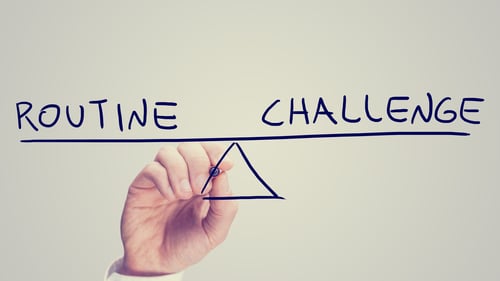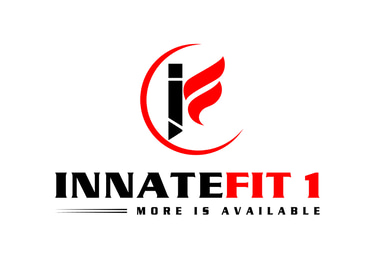Visit Innatefit1.com for exercise wear and equipment!!!
Negative Reps Unleashed: How to Break Plateaus and Trigger Explosive Muscle Growth
Discover how negative reps and eccentric overload training break plateaus and drive explosive muscle growth. Learn science, techniques, programming tips, and common mistakes to avoid maximum hypertrophy.
WORKOUTSMEN'S HEALTHFITNESS TIPSSTRENGTH TRAININGHEALTH
Joseph Battle
8/15/20258 min read


Introduction
Plateaus stall progress, erode motivation, and obscure your path to peak muscular development. Fortunately, negative reps—also known as eccentric training for hypertrophy—offer a powerful solution. By intentionally slowing the lowering phase of each exercise, you create greater muscle tension, induce microtrauma, and catalyze adaptation.
When integrated strategically, eccentric overload training enables strength gains and hypertrophy to exceed conventional limits. In this article, we delve into negative reps, explaining their role in advanced muscle building, dissecting the science behind eccentric training for hypertrophy, outlining effective overload techniques, and guiding you on how to program negative reps safely, while also warning you about common pitfalls.
Follow this roadmap to shatter plateaus, build rock-solid trust in your training strategy, and establish yourself as an authority on cutting-edge muscle-growth protocols.
Mastering the Descent – Understanding Negative Reps and Their Role in Advanced Muscle Building
Before plunging into complex protocols, it is essential to understand why negative reps set themselves apart from traditional concentric-focused training. At its core, negative reps emphasize the eccentric phase—the muscle-lengthening portion, where you lower the weight under control. Whereas concentric work (the lifting motion) predominantly recruits fast-twitch fibers for force generation, the eccentric phase tolerates greater loads, recruits additional muscle fibers, and amplifies mechanical stress.
To illustrate, imagine completing a barbell squat. The concentric drive rising from the bottom requires explosive hip extension, whereas the descent goes unnoticed at high speed. By slowing that lowering phase—say, a four- to six-second descent—you dramatically increase time under tension. Consequently, you induce microtears in muscle fibers, stimulate satellite cell activity, and activate growth-promoting pathways such as mTOR. Meanwhile, your connective tissues strengthen to support heavier loads, reinforcing joint stability.
Moreover, negative reps excel at breaking plateaus. Conventional routines quickly adapt; the nervous system becomes efficient at moving a given load concentrically, reducing stimulus novelty. However, when you introduce eccentric overload training—such as lowering twice your one-rep max with a spotter’s assistance on the concentric lift—you create an entirely new stressor. This shock to the system forces your muscles to adapt rapidly, building both size and strength.
Innovators in bodybuilding and performance sports have leveraged negative reps for decades. They appreciate that eccentric training for hypertrophy not only triggers greater protein synthesis but also fosters tenacity and mental grit. Indeed, as you master each descent, you cultivate the strategic discipline required for advanced programming.
Key takeaways:
• Negative reps exploit the muscle-lengthening phase to increase mechanical tension.
• Eccentric overload recruits additional fibers and boosts anabolic signaling.
• Slowing your descent breaks neural adaptation, shattering plateaus.
• Incorporating negative reps demands strategic planning to avoid overtraining.
As you proceed, remember: negative reps aren’t a gimmick—they’re a science-backed method for advanced muscle building. By integrating them thoughtfully, you reinforce your status as a strategist committed to maximizing value in every workout.
Beneath the Surface – The Science of Eccentric Training for Hypertrophy and Strength Gains
To wield negative reps effectively, you must understand the underlying physiology. Eccentric muscle actions generate greater force than concentric actions because fewer motor units are active to handle a given load. Instead, each motor unit endures more tension, yielding substantial mechanical stress. This heightened stress triggers robust anabolic signaling, notably increasing phosphorylation of key proteins in the mTOR pathway.
Simultaneously, eccentric training for hypertrophy induces more significant muscle damage. Researchers measure this by elevated creatine kinase levels and inflammatory markers after a workout. Although muscle damage alone doesn’t directly lead to growth, it signals the initiation of the repair process: satellite cells activate, fusing to existing fibers or forming new ones, thereby enlarging the muscle's cross-sectional area. In turn, increased muscle size translates to enhanced strength potential.
Moreover, eccentric work stimulates the remodeling of connective tissue. Tendons and fascia adapt to handle heavier loads, improving force transmission from muscle to bone. Over time, this adaptation supports heavier concentric lifts and reduces the risk of injury when chasing new personal records.
Neurologically, eccentric training fosters unique adaptations. You improve motor control in the lengthening phase, enhancing coordination between agonist and antagonist muscles. This refined coordination extends to all training modalities, enhancing overall performance.
From an endocrine perspective, eccentric exercises can elicit elevated acute growth hormone responses compared to concentric-only protocols. Combining mechanical tension, metabolic stress, and controlled damage maximizes your hypertrophic environment. Consequently, integrating eccentric overload training with traditional sets compels your muscles to amplify protein synthesis rates beyond what concentric work alone can achieve.
Importantly, recent studies highlight dosage considerations. While eccentric training for hypertrophy generates significant gains, excessive volume can prolong recovery times. Thus, strategic periodization—alternating phases of concentrated eccentric work with maintenance blocks—ensures maximal adaptation without burnout.
In summary:
• Eccentric actions generate higher force with fewer motor units, boosting mechanical tension.
• Muscle damage from eccentric work triggers satellite cell activation and growth.
• Connective tissue remodeling strengthens tendons, enhancing load capacity.
• Neurological improvements refine motor control and coordination.
• Hormonal responses amplify the anabolic environment.
• Structured periodization prevents overtraining and optimizes recovery.
With this knowledge, you’re equipped to apply eccentric training for hypertrophy intelligently, balancing stimulus and recovery to forge sustained strength and size gains.
Shock Tactics – Eccentric Overload Training Methods to Ignite Explosive Growth
Once you grasp science, it’s time to implement high-impact techniques. Below are proven eccentric overload training methods designed to stimulate rapid muscle adaptation. Each leverages negative reps to maximize mechanical tension and recruit untapped fibers.
Assisted Concentric, Slow Eccentric
• How it works: Use a spotter or machine for concentric assistance, then lower the weight over 4–6 seconds.
• Benefits: Allows you to exceed your one-rep max on the descent, intensifying muscle damage and tension.
• Application: Perform 4–6 reps per set, 3–4 sets per exercise, resting 2–3 minutes between sets to permit full force output.Single-Limb Eccentric Emphasis
• How it works: Perform single-leg or single-arm movements, using the uninvolved limb only for concentric aid.
• Benefits: Doubles the eccentric loading on each limb, accentuating unilateral development and core stability.
• Application: Incorporate single-leg Romanian deadlifts or single-arm bench presses, 3–5 reps per limb, 3 sets.Negative-Only Sets
• How it works: Focus solely on the eccentric phase. With a spotter’s help to return the weight, lower over 5–8 seconds.
• Benefits: Eliminates concentric fatigue, allowing maximal eccentric load and extended time under tension.
• Application: Use 110–120% of your concentric one-rep max for 3–5 slow negatives, 3 sets, with extended rest (3–4 minutes).Tempo Contrast Training
• How it works: Pair a slow eccentric set with a subsequent explosive concentric set of the same exercise.
• Benefits: Enhances both hypertrophy and rate of force development, translating to athletic performance.
• Application: Perform 6–8 slow eccentrics over 5 seconds, rest 30 seconds, then do 6–8 explosive reps at your regular tempo.Depth Drops and Negatives
• How it works: Step off an elevated platform, land softly, and immediately control the descent into a squat or lunge over 5 seconds.
• Benefits: Combines stretch stimulus with eccentric overload, maximizing muscle tension and reflex potentiation.
• Application: 3–4 drops, 5‐second descent, 60‐second rest, 3 sets.
Transition seamlessly between techniques to maintain novelty and confuse adaptation. Rotate through these methods in 4–6-week blocks, ensuring you periodize your eccentric overload training with phases of lower volume but higher intensity, followed by deloads. Always prioritize perfect form, especially during slow negatives, to avoid joint strain and ensure targeted muscle engagement.
By embracing these eccentric overload training tactics, you intensify your workouts, shatter stagnation, and ignite explosive muscle growth.
Smart Planning – Programming Negative Reps for Maximum Gains Without Overtraining
Integrating negative reps demands a calculated approach. Overuse can lead to excessive muscle damage, prolonged soreness, and a decline in performance. Therefore, structuring your program around recovery, intensity, and periodization is crucial.
Step 1: Baseline Assessment
Begin by evaluating your current training volume and recovery capacity. Track performance metrics—strength levels, fatigue patterns, and soreness duration—over two weeks. This data informs your eccentric load tolerance, guiding initial negative-rep volume.
Step 2: Phase 1 – Introductory Eccentric Emphasis (Weeks 1–4)
• Objective: Adapt tendons, fascia, and the nervous system to increased eccentric stress.
• Protocol: Introduce one eccentric-focused exercise per muscle group. Execute assisted concentric, slow eccentric reps (4–5 seconds) for 3 sets of 6 reps. Reduce total weekly training volume by 10–15% to accommodate extra time under tension and recovery needs.
Step 3: Phase 2 – Intensification (Weeks 5–8)
• Objective: Increase eccentric overload and stimulate hypertrophy.
• Protocol: Implement negative-only sets and single-limb eccentric emphasis. Aim for 3–4 sets of 3–5 reps at 105–110% of concentric one-rep max. Maintain longer rest intervals (3–4 minutes) to ensure maximal force production.
Step 4: Phase 3 – Contrast and Power (Weeks 9–12)
• Objective: Fuse hypertrophy with neural power development.
• Protocol: Use tempo contrast training, pairing slow negatives with explosive concentric sets. For example, 4 slow eccentrics (5–6 seconds) followed by 6 fast reps at 60% one-rep max. Perform 3 sets per exercise, two eccentric-focused exercises per session.
Step 5: Deload and Maintenance (Week 13)
• Objective: Facilitate recovery, consolidate gains, and prepare for the next cycle.
• Protocol: Reduce overall volume by 40%. Limit eccentric-focused work to one light session, using 60% of the previous cycle’s eccentric load with normal tempo.
Key programming tips:
• Prioritize big compound lifts (squat, bench, deadlift) for your primary eccentric work, then add accessory movements.
• Align nutrition and sleep to support heightened muscle-repair demands. Increase protein intake to 1.2–1.5g per pound of bodyweight during intensification.
• Monitor subjective fatigue and adjust volume if soreness impedes technique or performance.
• Use respiration and bracing to protect the spine during slow negatives.
By sequencing your negative-rep training through distinct phases—adaptation, intensification, power, and deload—you optimize hypertrophy while minimizing the risk of overtraining. This strategic cycle reinforces your authority as a professional who values both results and athlete well-being.
Pitfalls and Precision – Common Mistakes in Eccentric Training for Hypertrophy and How to Avoid Them
Even seasoned lifters stumble when introducing negative reps. To preserve gains and prevent injury, learn to sidestep these common errors.
Mistake 1: Excessive Volume Too Soon
• Why it happens: Enthusiasm for novel stimulus leads athletes to triple their volume overnight.
• Consequence: Overwhelming muscle damage, chronic soreness, and compromised immune function.
• Solution: Start with one eccentric-focused exercise per session, gradually adding volume over several weeks.
Mistake 2: Neglecting Proper Spotting and Equipment
• Why it happens: Lifters underestimate the risk of using supramaximal loads without adequate support.
• Consequence: Loss of control during slow negatives can cause dropped weights or joint strain.
• Solution: Always recruit a competent spotter or use safety bars/power cages. Use adjustable Smith machines or eccentric-specific devices when training solo.
Mistake 3: Inconsistent Tempo
• Why it happens: Under fatigue, athletes rush the eccentric phase, defeating the purpose of eccentric training for hypertrophy.
• Consequence: Reduced mechanical tension and diminished hypertrophic stimulus.
• Solution: Count aloud or use a tempo app to maintain 4–6 seconds per descent. Prioritize form even if it means lowering the load.
Mistake 4: Skipping Recovery Protocols
• Why it happens: Focus remains solely on gym performance, ignoring sleep, nutrition, and mobility.
• Consequence: Impaired muscle repair, increased injury risk, and plateaued progress.
• Solution: Schedule active recovery days with foam rolling, dynamic stretching, and low-intensity cardio. Aim for 7–9 hours of sleep and incorporate high-quality protein sources into your diet throughout the day.
Mistake 5: Improper Exercise Selection
• Why it happens: Lifters apply negative reps across every movement, including highly technical or isolation exercises unsuited for heavy eccentric loading.
• Consequence: Joint irritation and suboptimal muscle targeting.
• Solution: Reserve eccentric overload training for compound lifts—squat, bench press, Romanian deadlift. For isolation moves (e.g., cable curls), use moderate eccentric emphasis without supramaximal loads.
By avoiding these pitfalls and practicing precision, you safeguard your clients and yourself. Proper planning, conscientious execution, and disciplined recovery ensure negative reps become a sustainable tool in your hypertrophy-building arsenal.
Conclusion
Negative reps, powered by eccentric training for hypertrophy and eccentric overload training, stand at the frontier of advanced muscle building. When you understand the science, apply proven techniques, and program intelligently, you break through plateaus and ignite explosive growth. Remember to phase your training, respect recovery, and refine your execution.
Ultimately, mastery of negative reps demonstrates strategic ambition and positions you as a trustworthy authority in strength and hypertrophy coaching. Embrace the descent and watch your physique—and professional reputation—soar to new heights.






